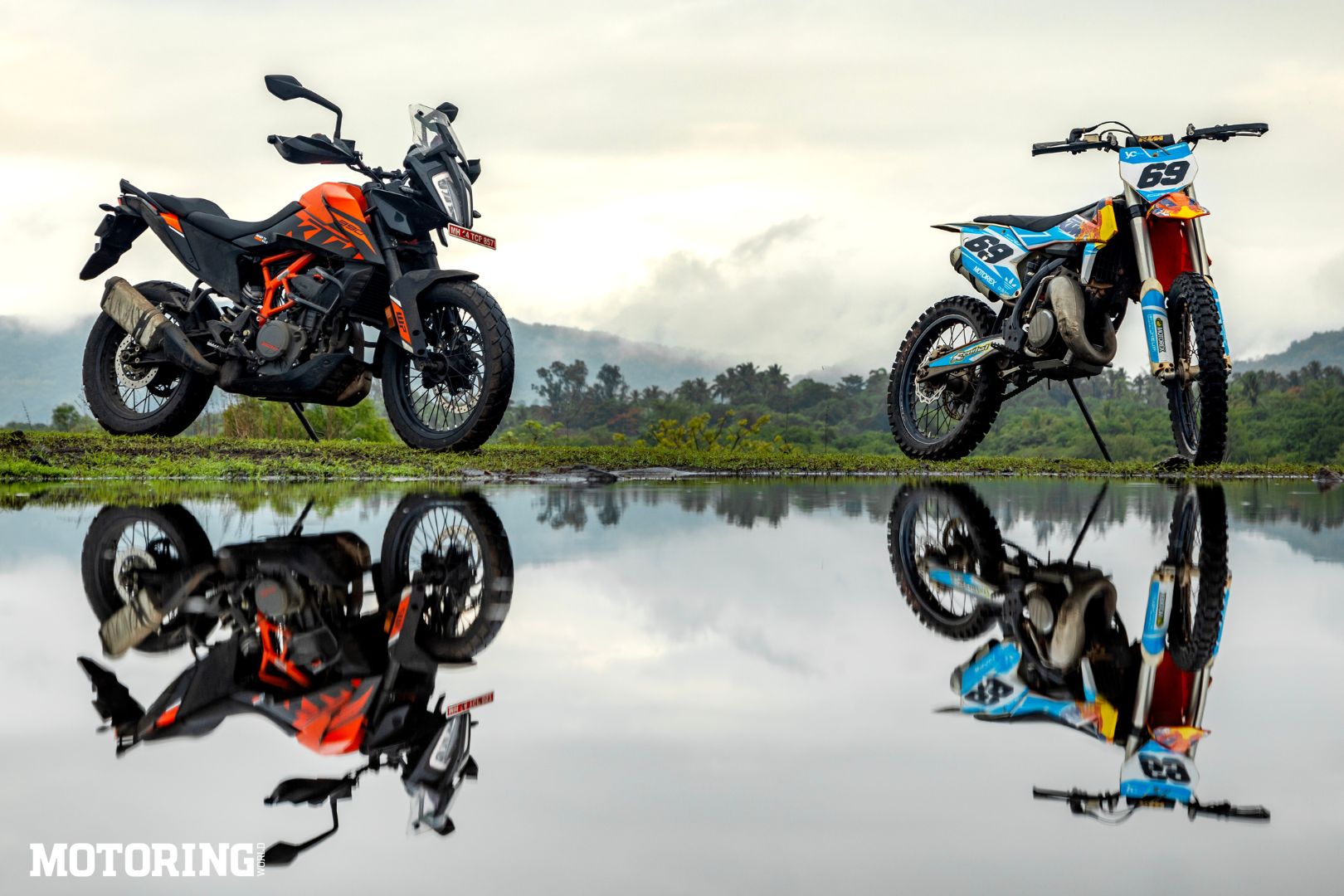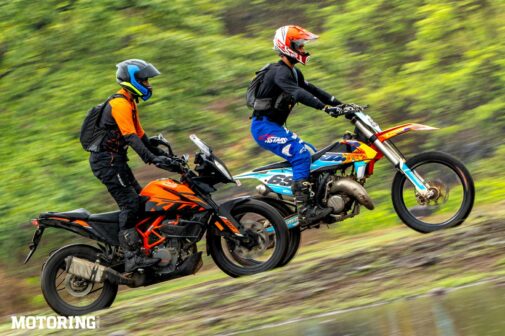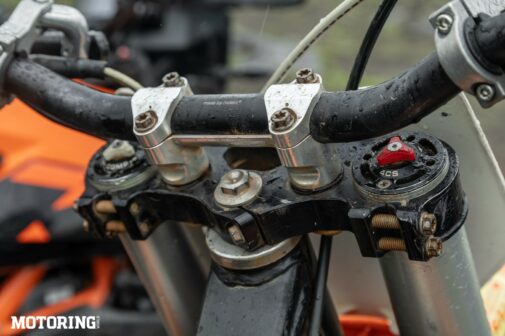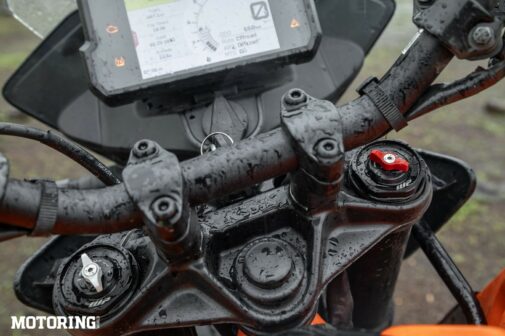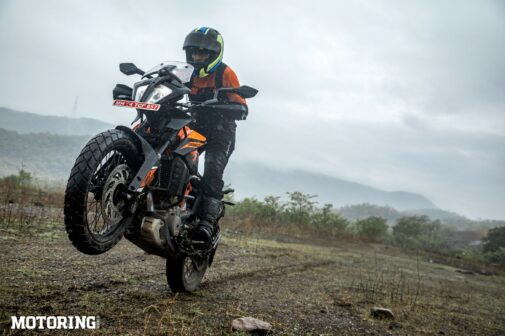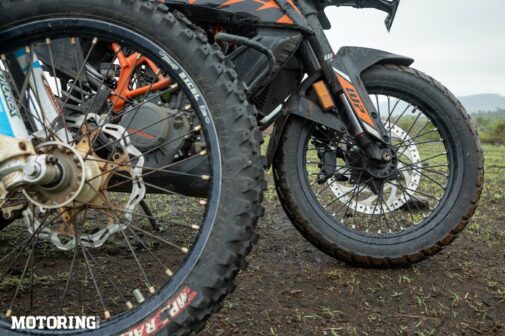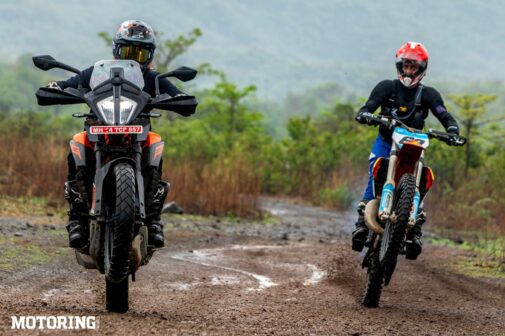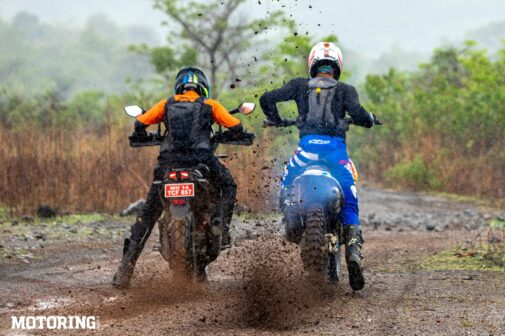Off-roading has everything to do with ‘off the beaten path’ allowing for exploration of the undiscovered bylanes of nature. Decades of innovation have gone into creating versatile machines to traverse these challenging terrains, and KTM is no stranger to the process. With a rich history of creating extremely capable off-roading instruments, and close to two decades of back-to-back Dakar wins under its belt, it showed a sliver of promise when it launched the 390 Adventure back in 2020.
Sure, back then the lack of wire-spoked wheels was quite a hot topic for discussion, and a lot of enthusiasts made it clear that it would have been a fitting inclusion, along with a few other things. Come 2023, KTM launches the much-awaited 390 AdventureSW, featuring wire-spoked wheels, adjustable suspension and dedicated off-road modes and settings. With wire spokes, the rims are designed to bend, flex and handle impacts to a certain degree, letting the rider tackle rough terrains with ease. Spoked wheels are also easily repairable, as replacing individual parts is simple and inexpensive.
Coming to the adjustable suspension, the setup allows the rider to tweak the compression, rebound and preload characteristics of the suspension depending on the surface conditions. This means that the rider gets to customise exactly how the motorcycle reacts to the surface being ridden on, with consideration of the rider’s weight, reactivity comfort and so on. The upside-down front forks get 30 settings for both compression and rebound, while the rear mono-shock gets 20 rebound settings and 10 preload settings.
No two riders are the same when it comes to their motorcycling needs and riding styles, hence the adjustable suspension. That being said, adjusting according to height and weight is also essential. Although motorcycle manufacturers have default settings, not every rider will sit, fit, and ride on a bike the same way. Adjusting the suspension to better suit the rider themselves can impact how well the motorbike handles. While most of us are aware of how to adjust preload, the rebound and compression settings are fairly new.
In terms of adjustment, the centre often works best as a gauge of what you need from your rebound. While doing a test ride, determine if the bike feels too loose or too harsh. If it doesn’t handle well in the conditions you need it to, then you’ll need some adjustments. You also don’t need to go overboard, as one or two clicks at a time will be enough to feel the changes. If the bike feels too loose while handling, you’ll want to wind clockwise, whereas if it is too harsh, wind counterclockwise.
Compression adjustments can make changes to impact how the bike handles bumps and braking. If the bike feels too rigid and hard on bumpy terrains, you’ll want to wind the knob counterclockwise. For the opposite issue, where the bike feels too soft instead and tends to bottom out, you’ll want to turn it clockwise. Setting up your suspension is a long process of trial and error, so there’s no hurry. It takes time to figure out exactly how it works and once you do, it is pretty rewarding. And with that, we’re all set to hit the trails.
Now although the wire-spoked wheels and adjustable suspension are fairly new additions on the 390 Adventure, KTM has been offering them on their dirt bikes for a while now. The case in question would be our dear friend Yogi’s beautiful KTM SX150, which he uses to hit the trails every weekend. Now since we were planning to test out the 390 Adventure’s capability, what better way than to accompany Yogi on one of his trails and see whether we could keep up?
On a fine Sunday morning, we met up at the start of the trail, and Yogi and his off-roading buddies gathered around to have a glimpse of what all the fuss was about with the new SW variant. Speaking to them and looking at the bikes that they were to be riding, the first thing I noticed was that they were all running knobby, off-road tyres. The second thing was that all of their bikes were almost half the weight of the 390 Adventure, which weighed in at 177 kg. I seemed to have my work cut out for me if I was to be keeping up with the likes of them.
As we set out, the initial section was more of a flattish trail, strewn with small rocks and pebbles. A few clicks of adjustment on the fly and I was gliding through this section at a rather surprising pace. Being the beginning of the monsoon season, it soon started to rain and a bit of slush built up on the rest of the trail. I had to stop and lower the tyre pressure to leverage a bit more traction from the Metzelers. With that sorted out, I continued through the trail. As expected, it wasn’t too long before I fell behind and had to resort to finding my way by following their tracks in the mud.
With the mud caking on the tyres, I was soon slipping around. It felt like I was riding on a pair of racing slicks, but I managed to catch up with the group before long. Truth be told, I wasn’t that confident in the beginning, but the more time I spent with the bike, the more capable it felt, with a few tweaks here and there, of course. Now, while it is unlikely that the majority of 390 Adventure riders would be tackling terrain like this on a regular basis, I have seen a few examples and moreover, now I have done it myself, I know it is possible.
That is one thing about the adjustable suspension setup, once the ride quality improves, the bike responds better and the whole riding experience is elevated by quite a bit. Not to mention that the 390 Adventure-SW was managing to keep up with the sub-100 kg SX150 for most of the duration of the trail. KTM has made a pretty neat decision in introducing the SW variant to the lineup, and with the amount of time I managed to spend with it, I can confirm that it makes for quite a good investment. Now I just sit and wait with wishful optimism for KTM to send us a long-termer.





